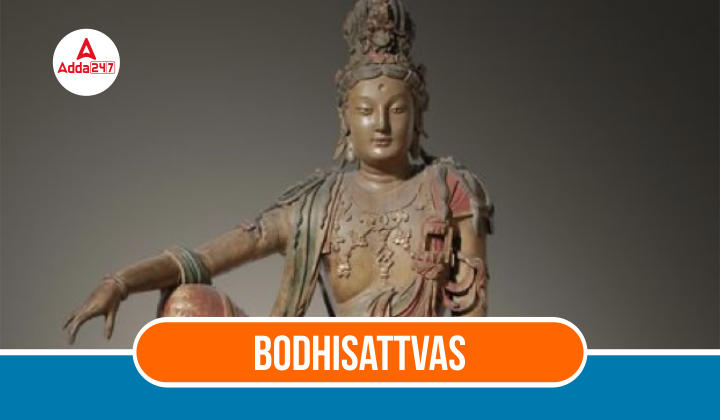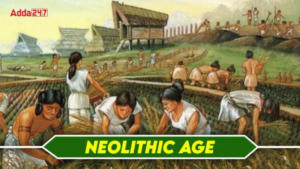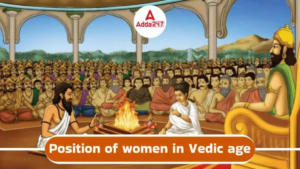Table of Contents
Bodhisattvas are people following Buddha’s path to enlightenment, aiming to become Buddhas themselves. The term comes from Sanskrit and means “individuals aspiring to be Buddhas.” This idea is central to Mahayana Buddhism, which sees Buddha as divine.
In this article, we’ll explore key concepts about Bodhisattvas, such as the four virtues and the list of Bodhisattvas relevant to UPSC exams. Understanding this topic is crucial for UPSC IAS exams, as it’s part of the ancient history section in both the General Studies Prelims and Mains Paper 1 syllabus.
Bodhisattvas
A Bodhisattva is a person who exemplifies the qualities of Bodhicitta, which include compassion and the desire for enlightenment for the good of all living things. The Jataka Tales state that Buddha was formerly a Bodhisattva. These stories show the different steps that Bodhisattvas took to develop characteristics like selflessness and righteousness. A Bodhisattva is thought to go through ten stages to become enlightened.
In Theravada philosophy, Buddha referred to himself as a Bodhisattva throughout his lifetime, only acknowledging his Buddha-hood after achieving full enlightenment. Additionally, eight Bodhisattvas are recognized as manifestations of Buddha.
List of Bodhisattvas
Bodhisattvas are highly respected people in Mahayana Buddhism who represent knowledge and insight on the path to realization. They are widely acknowledged in the Buddhist tradition.
Avalokiteshvara
- Bodhisattva is renowned for compassion.
- Also known as Guanyin, meaning “Perceiver of all sounds.”
- Depicted as female, holding a lotus in hand.
- Extensively described in the Lotus Sutra, a key text of Mahayana Buddhism.
- Capable of hearing the prayers and cries of all beings, offering necessary assistance.
- Among its various forms, Padmapani Lokesvara is particularly popular, signifying “Lord with a Lotus in hand.”
- Avalokiteshvara Bodhisattva sculptures often feature a Buddhist saying inscribed, translating to “The Buddha has explained the cause of all things that arise from a cause. He, the great monk, has also explained their cessation.”
Maitreya
- Bodhisattva is associated with the Future.
- Maitreya, not yet a Buddha, is believed to dwell in Tusita Heaven, a realm in Buddhist cosmology.
- A well-known depiction of Maitreya Bodhisattva is the Laughing Buddha, considered an incarnation of Maitreya.
- Anticipated to descend to Earth in the future, as numerous scriptures portray Maitreya as the successor to Gautama Buddha, the current Buddha.
Manjushri
- Bodhisattva is revered for Wisdom.
- One of the most significant figures in Mahayana Buddhism.
- Iconic representation is commonly found in meditation halls, libraries, and study rooms of Buddhist monasteries.
- In Chinese Buddhism, known as Wenshu and esteemed as one of the Four Great Bodhisattvas.
- Depicted as a male Bodhisattva.
- The iconic image typically holds a flaming sword called the “Vajra Sword of Discriminating Light” in the right hand and a fully bloomed Blue Lotus flower in the left hand.
Samantabhadra
- This Bodhisattva embodies Practice and Meditation.
- Samantabhadra, Manjushri, and Buddha collectively constitute the Shakyamuni trinity in Buddhism.
Ksitigarbha
- Ksitigarbha, Sanskrit for “Womb of the Earth,”
- Known as the protector of the downtrodden, the dying, and those plagued by nightmares.
- Considered the Bodhisattva of Mortals.
Vajrapani
- Vajrapani, known as the Thunderbolt-bearing Bodhisattva.
- One of the trio of protective deities guarding Buddha.
- In human form, depicted holding the vajra in his right hand.
- Occasionally identified as a Dhyani-Bodhisattva, akin to Akshobhya, the second Dhyani Buddha.
Sadaparibhuta
- Manifests the spirit of never disparaging others.
- Avoids belittling or doubting the potential for Buddhahood in living beings.
- Acts to uplift individuals, dispelling feelings of worthlessness and low self-esteem.
Akasagarbha
Akasagarbha, also referred to as the twin brother of Ksitigarbha, derives its name from “boundless space treasury.” These eight revered Bodhisattvas hold significant importance in Buddhist teachings and practices. Understanding their roles forms a crucial part of Buddhist beliefs and followers’ spiritual journeys. Additionally, aspiring candidates for the IAS Exam should familiarize themselves with the Teachings of Buddha, which centers around concepts like the middle path of living, the eight-fold path to enlightenment, and the four noble truths.
Four Virtues of Bodhisattvas
When reaching enlightenment, every mortal being embodies four virtues known as Brahmaviharas. Here are the four virtues displayed by a Bodhisattva:
- Maitri: Signifying kindness and goodwill towards all beings. Bodhisattvas cultivate kindness and compassion, extending help to those in distress.
- Karuna: Meaning compassion. Bodhisattvas empathize with themselves and endeavor to understand others’ suffering as their own, fostering deeper insight into others’ challenges and finding solutions.
- Mudita: The third virtue is empathetic joy and happiness. Experience joy in others’ happiness, even if they are strangers and haven’t contributed to their joy.
- Upeksha: Considered one of the most crucial virtues, upeksha entails non-attachment, tolerance towards other beings’ existence, and maintaining a balanced mind.
Importance of Bodhisattva
Check the significance of Bodhisattva which we have provided below:
- In the Mahayana tradition of Buddhism, Bodhisattva holds a central position in all rituals and observances.
- Followers of Bodhisattvas discover a path towards cultivating virtues and behaviors that pave the way for enlightenment.
- Bodhisattvas are pivotal figures in Buddhist lore, believed to have a crucial role in alleviating the world from anguish and sorrow.
Read More about Indian History
Art And Architecture of Bodhisattva
- The art and architecture inspired by Bodhisattvas reflect the spiritual essence of Buddhism. Bodhisattvas are esteemed figures who, having achieved enlightenment, opt to remain in the world to guide others towards enlightenment.
- In Buddhist art, Bodhisattvas are portrayed in diverse forms and poses, often with serene expressions, adorned in ornate robes and jewellery. Sometimes depicted with multiple arms or heads, symbolizing their ability to aid numerous beings simultaneously.
- Associated architecture includes temples, monasteries, and stupas, designed to evoke a sacred and tranquil atmosphere for Buddhist devotees. These structures feature intricate carvings, vibrant paintings, and statues of Bodhisattvas, serving as focal points for devotion and inspiration.
- The art and architecture of Bodhisattva convey beauty, compassion, and spiritual transcendence, visually embodying Buddhist teachings and ideals. They inspire practitioners to cultivate virtues such as kindness, wisdom, and selflessness.
About Paramitas
Paramitas represent a collection of noble qualities demonstrated by enlightened beings akin to Buddha. It is the responsibility of every Bodhisattva to embody Paramitas in their conduct as they progress towards enlightenment. In simple terms, Paramitas entails selfless actions for the benefit of others. Here are some of the Paramitas or noble qualities:
- Sheel Parami: Embracing virtue, morality, and ethical conduct.
- Nishkaam Parami: Renouncing worldly pleasures and desires.
- Daan Parami: Practicing generosity and giving to others.
- Virya Parami: Exerting the right effort, energy, and vigour.
- Sacha Parami: Upholding honesty, truthfulness, and integrity.
- Shanti Parami: Cultivating calmness, patience, endurance, and acceptance.
- Adhittana Parami: Demonstrating resolution and determination in achieving goals.
- Metta Parami: Showing kindness and friendliness towards all beings.



 Bishnoi Movement - History, Objective, a...
Bishnoi Movement - History, Objective, a...
 Neolithic Age- Agriculture, Tools, Potte...
Neolithic Age- Agriculture, Tools, Potte...
 Position of Women in Vedic Age: Societie...
Position of Women in Vedic Age: Societie...




